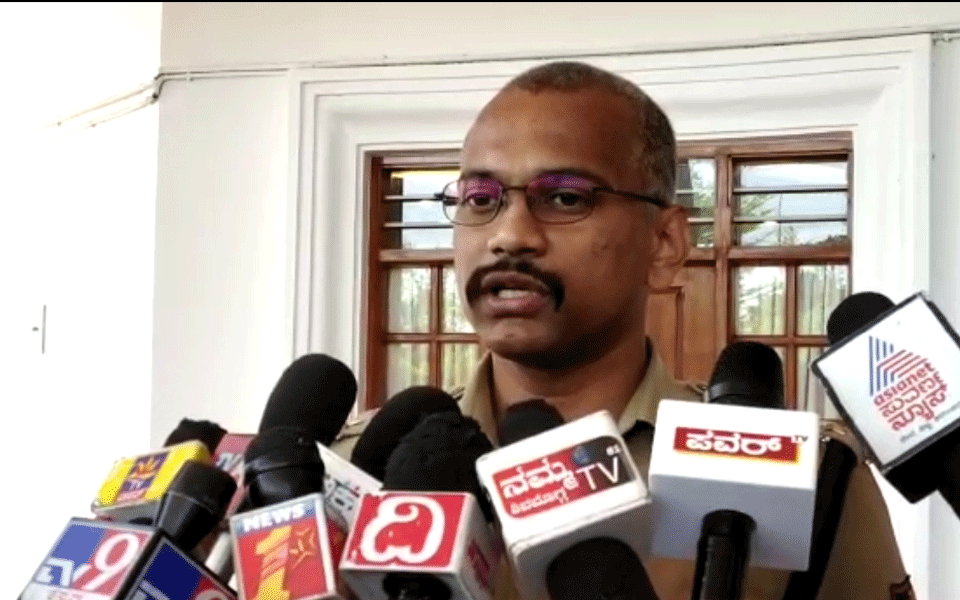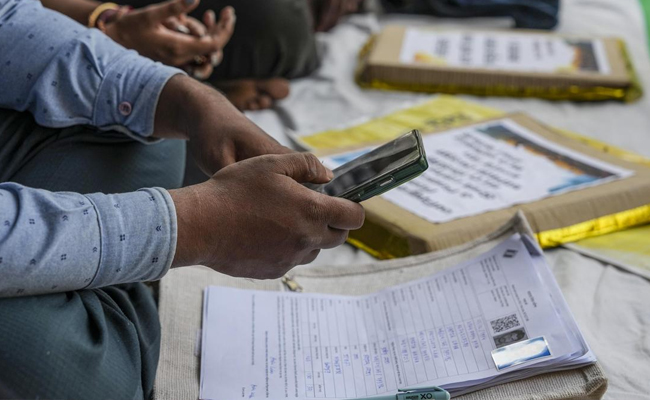Shivamogga: District Superintendent of Police Laxmiprasad on Friday gave more information into the investigation of the murder case of Hindutva activist Harsha in Shivamogga.
Speaking to media reporters here in the city, the SP said the car used by the accused in the case was from a different state and investigations into how it came to Shivamogga, and the details of the owner are being investigated.
He added that ten people have been arrested so far in the case and they are being questioned by the police. He also added that they are probing the involvement of more people in the case.
“We have not recovered Harsha’s mobile phone yet, but we know who video called him. We also know who threatened the cops after the murder. We will arrest them soon,” the SP told reporters.
“The police is also probing the involvement of Satu and gang in this murder case. All angles are being investigated to trace links of any organisation in the murder,” he added.
Among those arrested, Kashif, and Asif face cases related to law and order while Rihan and Afnan face three and two similar cases respectively. Other five have a history of several cases of robbery, dacoity cases against their names, he further informed adding that the slain activist Harsha had two cases related to religion against him.
Let the Truth be known. If you read VB and like VB, please be a VB Supporter and Help us deliver the Truth to one and all.
Report: Thufail Muhammad Abudhabi
Dubai: The funeral of four young brothers who died in a tragic road accident near Abu Dhabi drew hundreds of mourners to the Al Qusais cemetery on Tuesday evening, leaving the UAE’s expatriate community in deep shock and grief.
The children Ashaj (14), Ammar (12), Azaam (8) and Ayyash (5) were the sons of Abdul Latheef and Ruksana, natives of Kerala’s Malappuram district. The family was returning to their Dubai residence after attending the Liwa Festival on the outskirts of Abu Dhabi when their car met with a fatal accident early Sunday morning.
Three of the children died on the spot, while Azaam succumbed to his injuries on Monday evening during treatment. The family’s domestic helper, Bushra Fayaz (49), also lost her life in the crash. Her body was repatriated to India on Monday night, and funeral rites were held in Kerala on Tuesday.
Abdul Latheef, who sustained injuries in the accident, arrived at the cemetery from Abu Dhabi in a wheelchair, his hand in a sling, to attend the burial of his sons. Mourners described the scene as one of the most heartbreaking they had ever witnessed.
“I have never seen the mass burial of children from the same family. It was devastating for everyone present,” said a social worker who assisted the family.
The couple’s only daughter, Izza (10), survived the accident with minor injuries and is undergoing treatment. Unaware of the loss of her brothers, she was seen playing on a mobile phone from her hospital bed.
Relatives said informing the parents about the tragedy was handled with extreme care. Abdul Latheef was told late on Sunday night, while Ruksana who had undergone surgery for an injury to her hand was informed only on Tuesday after counsellors were brought in to break the news professionally.
Before the burial, the parents were allowed to see their children one last time. Ruksana was taken by ambulance to the mortuary, while Abdul Latheef obtained special permission for temporary discharge from hospital to attend the funeral. Ruksana remained hospitalised with her daughter.
Though the family holds Ras Al Khaimah visas, special permission was obtained to conduct the burial in Dubai, where the family resides and where most relatives are based. Community members expressed gratitude to the Dubai authorities for facilitating the process.
Abdul Latheef runs a business in Ras Al Khaimah, while Ruksana works as a property consultant in Dubai. All five children were students of Arab Unity School in Dubai, following the British curriculum. The school management issued a circular to parents outlining measures to support students and families affected by the tragedy and advising on how to discuss the loss sensitively with children.
The cause of the accident has not yet been officially confirmed by Abu Dhabi Police. Public discussions have pointed to possible factors such as dense winter fog and overspeeding, though authorities are yet to release findings.





